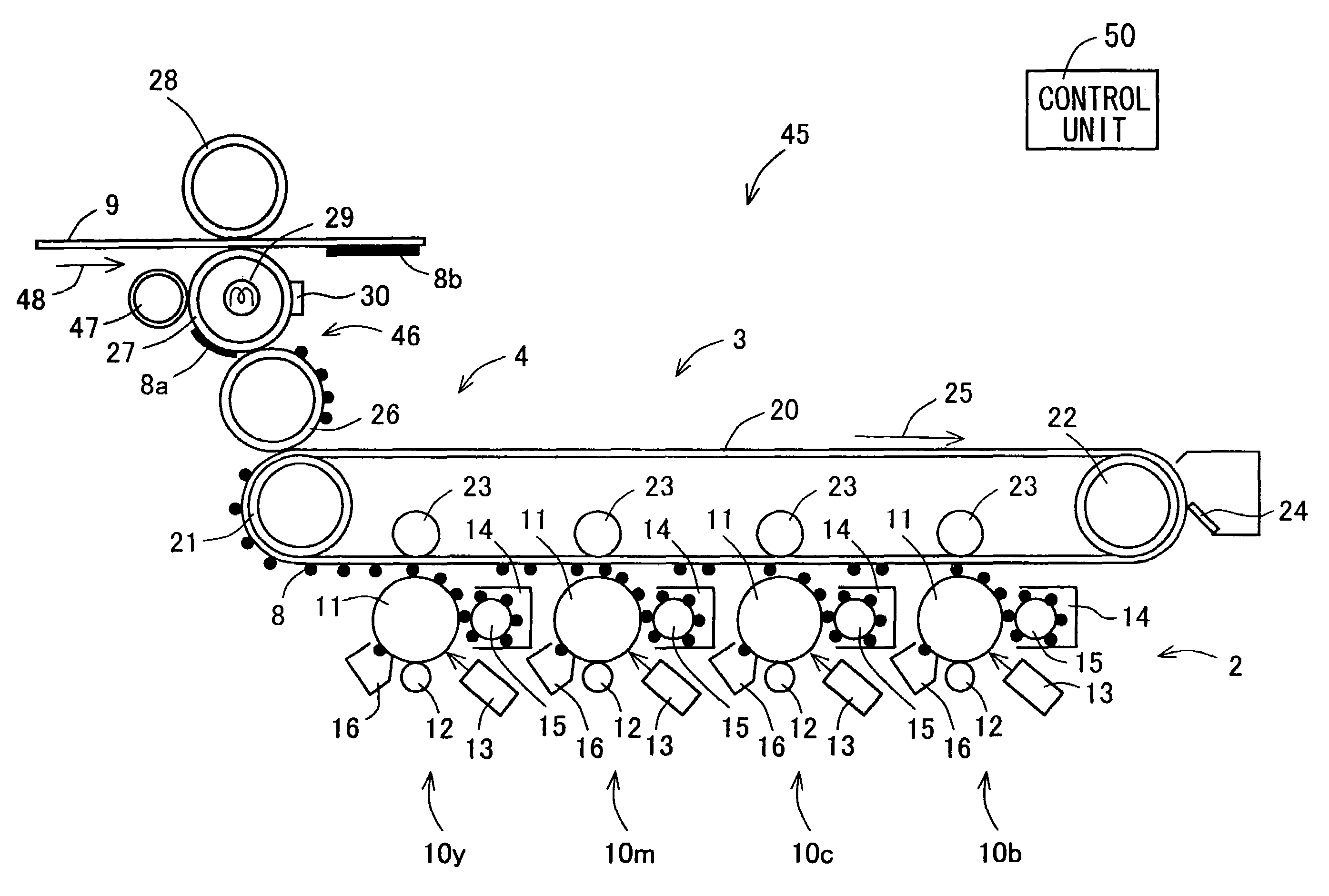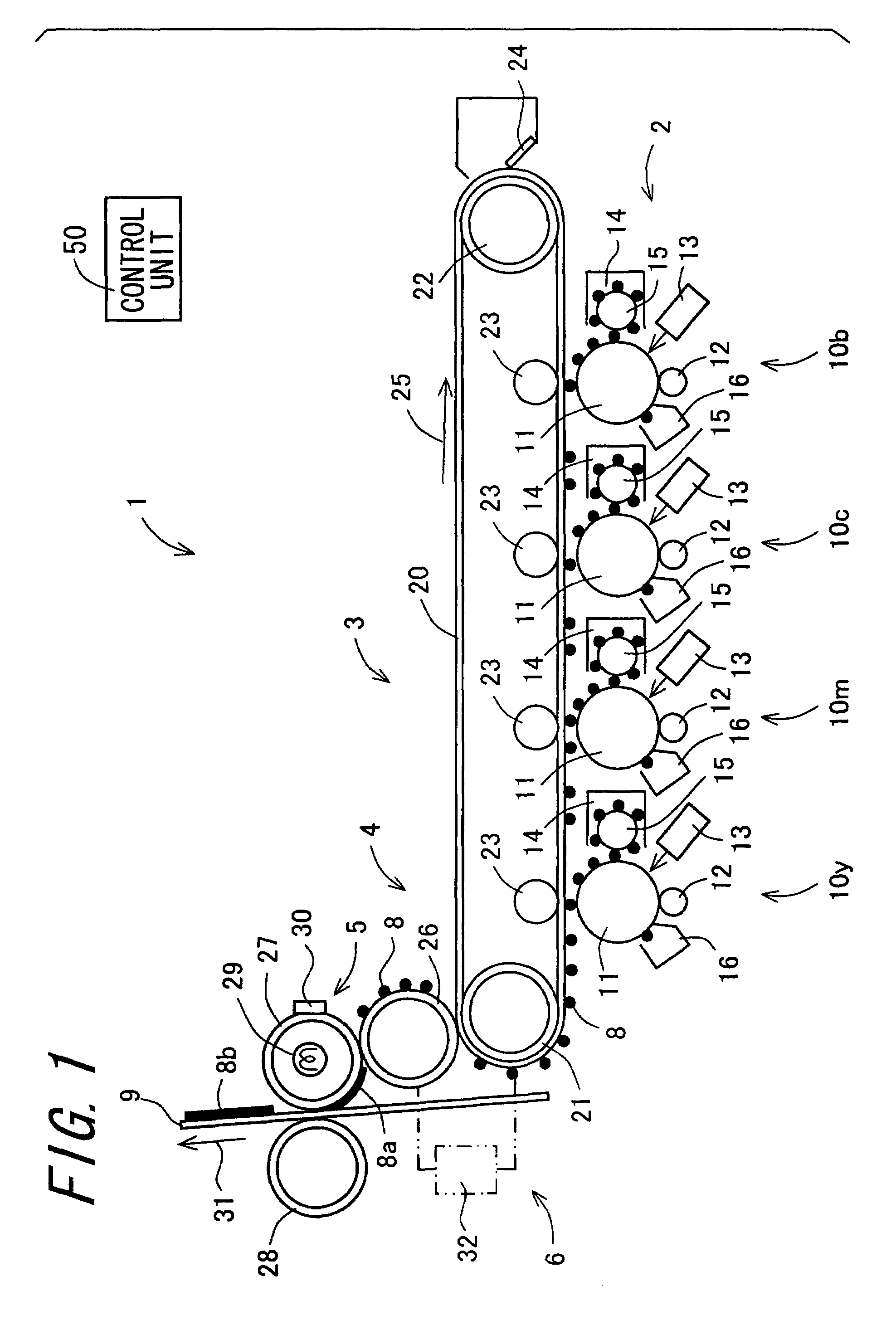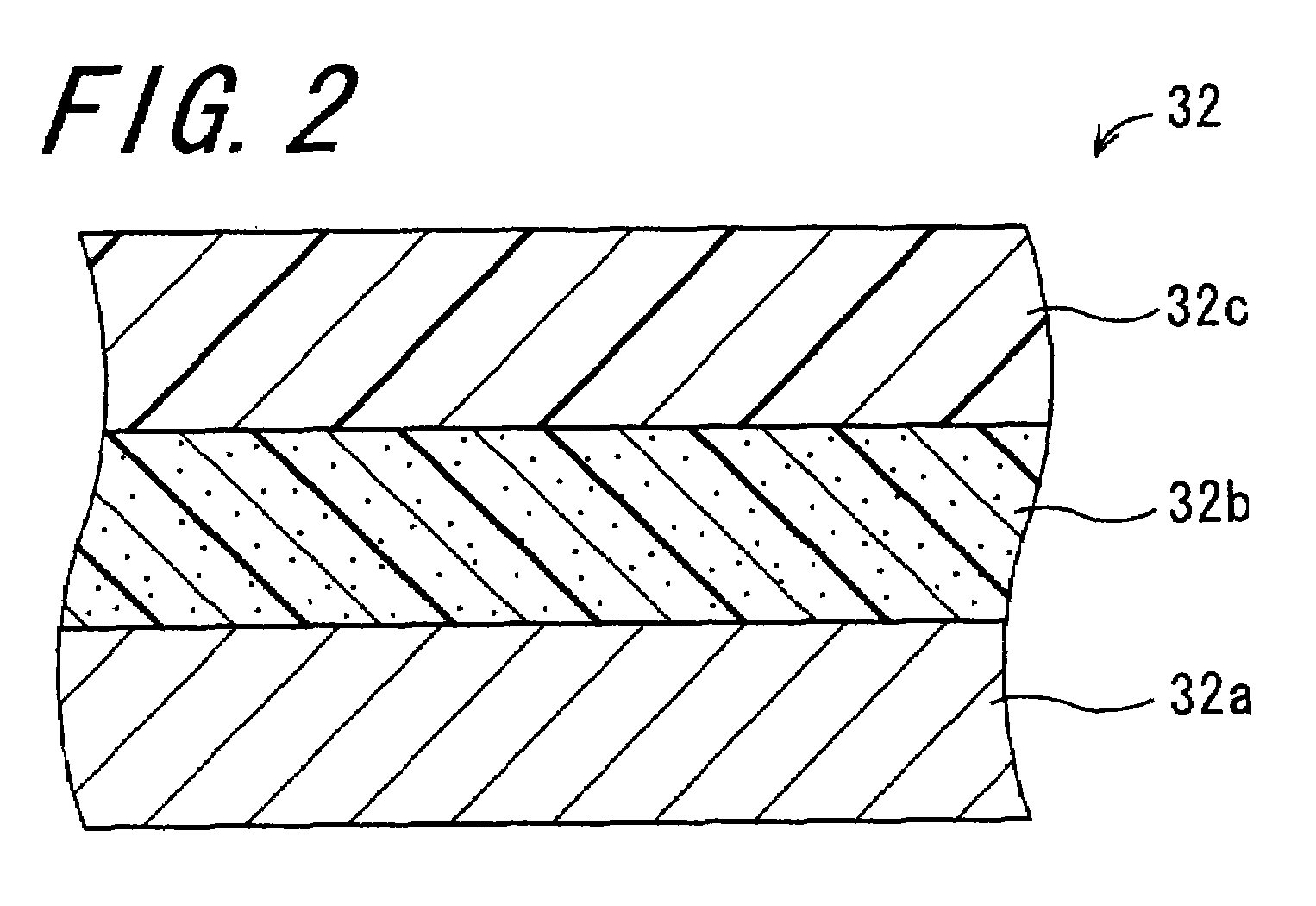Image forming apparatus with first and second intermediate transfer sections
a technology of image forming apparatus and intermediate transfer section, which is applied in the direction of electrographic process apparatus, instruments, optics, etc., can solve the problems of fixing failure, tendency to have a fixing failure, tendency to have a fixing failure, etc., and achieve excellent color reproducibility, improve the transfer capability, and reduce the heating temperature of the transferring and fixing section.
- Summary
- Abstract
- Description
- Claims
- Application Information
AI Technical Summary
Benefits of technology
Problems solved by technology
Method used
Image
Examples
experimental example
[0077]With respect to the image forming apparatus (the image forming apparatus 1) of the invention, and an image forming apparatus according to the related art which was provided with a fan for cooling the first intermediate transfer belt 20 instead of the intermediate transfer roller 26 between the first intermediate transfer belt 20 and the transferring and fixing roller 27 in the image forming apparatus 1, a surface temperature and power consumption of the photoreceptor drums 11 were measured when sheets of paper were continuously fed at a rate of 40 sheets per minute. The results are shown in Table 1. In addition, the intermediate transfer roller 26 is a roller member which includes an aluminum cored bar having an external diameter of 30 mm, an elastic layer having a thickness of 2 mm, composed of silicone rubber, and a PFA layer having a thickness of 30 μm. The first intermediate transfer belt 20 is a belt member which has an inner circumference diameter of 273 mm, and includes...
PUM
 Login to View More
Login to View More Abstract
Description
Claims
Application Information
 Login to View More
Login to View More - R&D
- Intellectual Property
- Life Sciences
- Materials
- Tech Scout
- Unparalleled Data Quality
- Higher Quality Content
- 60% Fewer Hallucinations
Browse by: Latest US Patents, China's latest patents, Technical Efficacy Thesaurus, Application Domain, Technology Topic, Popular Technical Reports.
© 2025 PatSnap. All rights reserved.Legal|Privacy policy|Modern Slavery Act Transparency Statement|Sitemap|About US| Contact US: help@patsnap.com



